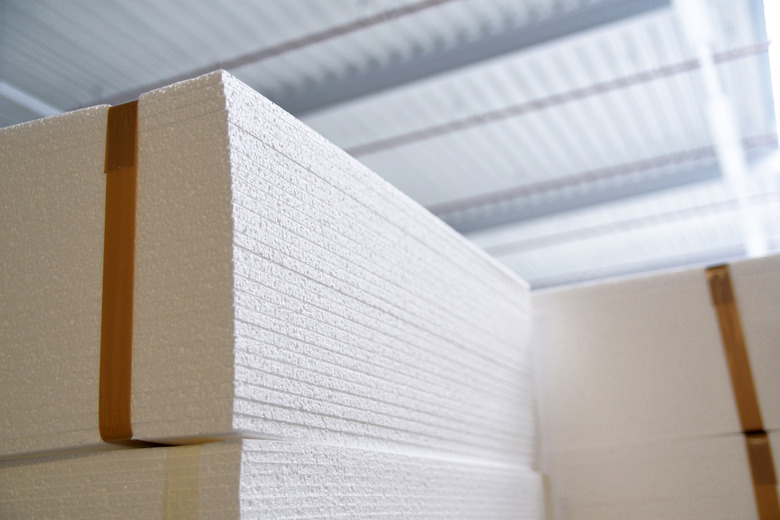Nonexpanding Foam Types
We may receive a commission on purchases made from links.
Foam wouldn't be foam if it didn't expand a little bit because it takes a certain amount of air to make a foam, and air occupies space. Given that all foams expand somewhat, some do so much less than others, and these are known as low-expansion foams. The line between a high-expansion foam and a low-expansion one is somewhat blurry, but in the world of firefighting, where foam is used to combat fire, a low-expansion foam is defined as one that occupies no more than 20 times the volume it occupied as a liquid. By contrast, some high-expansion foams expand to 200 or 300 times their original volume.
Because it contains less air, a low-expansion foam is denser than a high-expansion one, but density also depends on the nature of the material in the foam. For example, as a raw material for foam mattresses, latex is denser than polyurethane, so latex foam mattresses are firmer and last longer than polyurethane ones. Memory foam, on the other hand, is a type of polyurethane foam with additives that increase its density, making for a mattress that's even heavier than latex and with the "slow-moving" properties characteristic of this type of foam.
Closed-Cell Foam Insulation
Closed-Cell Foam Insulation
Foam is used extensively in construction as an insulation material and roof covering, and closed-cell foam is generally preferred to the open-cell variety because it has a higher R-value, which means it better insulates. Both types contain air bubbles (or cells), but because the material from which closed-cell foam is derived is denser and heavier, the cells are small and fully encapsulated, unlike those in open-cell foam, which are large and partially exposed.
Besides having better insulation value, closed-cell foam insulation is rigid and can actually strengthen the structure of the building in which it is installed. It occupies a fraction of the space of a high-expansion product and can be used in confined spaces, such as 2 x 4 wall cavities. The tight cells provide less space for water to seep in, which together with its high insulation value makes closed-cell products better for spray foam roofing than open-cell ones.
Closed-Cell Foam Mattresses
Closed-Cell Foam Mattresses
When used for mattresses, low-expansion, closed-cell foam has both advantages and disadvantages over high-expansion, open-cell foam. Closed-cell foam is firmer and provides more support, but its higher R-value can be a blessing or a curse depending on whether it's winter and you want to stay warm, or it's summer and you want to cool off. Closed-cell foam won't allow your body heat to dissipate in the summer, and that can make it hard to sleep.
On the other hand, closed-cell foam is virtually waterproof, so accidents in bed won't force you to replace the mattress, and spills won't sink deep into the foam and create mold problems.
Aqueous Film Forming Foam for Fires
Aqueous Film Forming Foam for Fires
Foam serves several purposes in firefighting, including cooling the fire, reducing the amount of water needed to fight the blaze and breaking down the surface tension of water to make it more effective. Low-expansion foam is recommended for Class B fires, which are those that involve flammable liquids, such as alcohol, gasoline or grease, because it forms a thicker blanket to extinguish the blaze.
The foam is created by mixing a concentrate with water and air. The more water and concentrate and the less air in the mixture, the denser the foam and the less it will expand. The mixture is regulated by the device being used, whether it's a foam delivery apparatus on a fire truck or a handheld fire extinguisher for home use.
